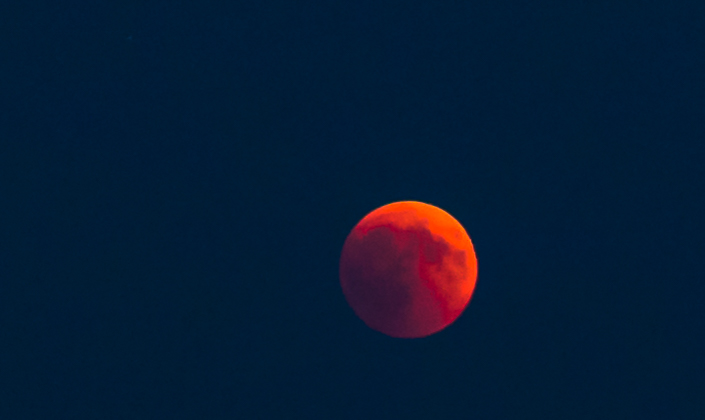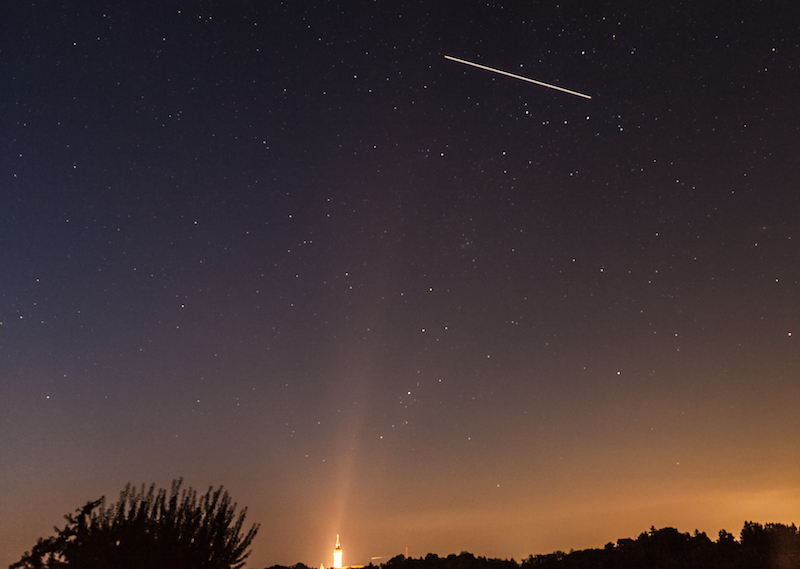RED MOON JULY 27, 2018
A mostly clear sky in Upper Bavaria offered really good opportunities to watch the epochal astronomy event of the year: the total eclipse of the moon announced as the “Blood-Moon”. The eclipse would last longer than any other in this century. Furthermore, a bright planet Mars was close to the eclipsed moon. In the evening hours also Venus and Jupiter were visible. Around 10.30pm the International Space Station happened to fly over Germany.
I chose a meadow with a good view of the Eastern and Southern horizon as a viewpoint. It proved to be a good choice and I got company by several other watchers coming from the Ammersee-Lake-region.
It was a hot day and there were some higher clouds in the South-East. There was also a layer of dust close to the horizon. Therefore the moon could not be seen when it rose. It was around 09.20pm when a small sickle appeared between the clouds. This was because the moon wasn’t totally eclipsed.

 Stock photography by Peter Engelmann at Alamy
Stock photography by Peter Engelmann at Alamy
Soon later it became an orange-red disk, the so-called “Blood Moon”. For some time it wasn’t really dark and the moon wasn’t as prominent as it would be normally. It was more like a barely visible shape in the blue sky.
But then it became more and more impressive minute by minute as night was falling.
I detected some thunderstorm clouds in the distance before and later sheet lightning in the far distance added to the upcoming spectacle.
Finally, Mars appeared above the dust in the South. It was a tremendous sight: Mars was much brighter as the eclipsed moon but both objects shared these orange-red shining light. It was a strange sky.
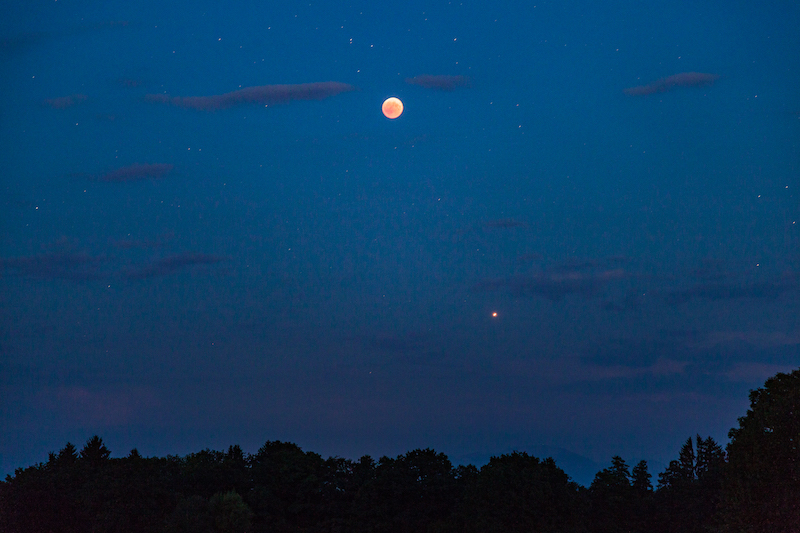
Around 10.00 pm I regretted not having brought a jacket since it became distinctively colder. This is normally a big advantage during the heat-wave this year that it is cooling down in the countryside close to the mountains and it is not like the tropical nights in the big cities. The fantastic event made me forget the colder temperatures during the later evening. The appearance of the ISS was also a great sight.
As the sky became really dark the spectacle unfolded completely as a big unforgettable experience: It was after the passage of the ISS which was flying over us very high above the horizon when the Milky-Way became visible.
Normally the Milky-Way can’t be seen when there is bright moonshine. This night it was a fantastic sight.
Obviously, there were longer lasting thunderstorms somewhere in the Alps, since there was sheet-lightning in the South.
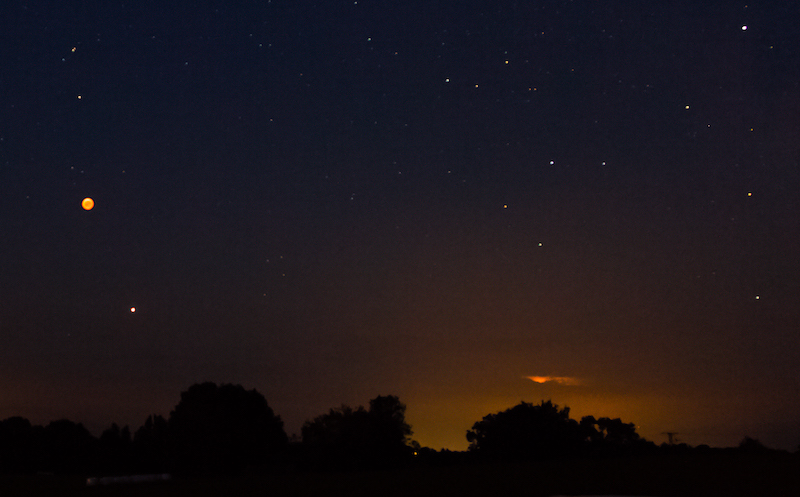
A lot of people had gathered and looked at the sky with awe. It indeed was an awesome event. As long as the moon was fully eclipsed there was a palpable otherworldliness. After 11.00 pm the total eclipse ended and the moon became soon brighter and brighter. The milky way couldn’t be seen any longer but the extraordinary sight will always last in my memory.
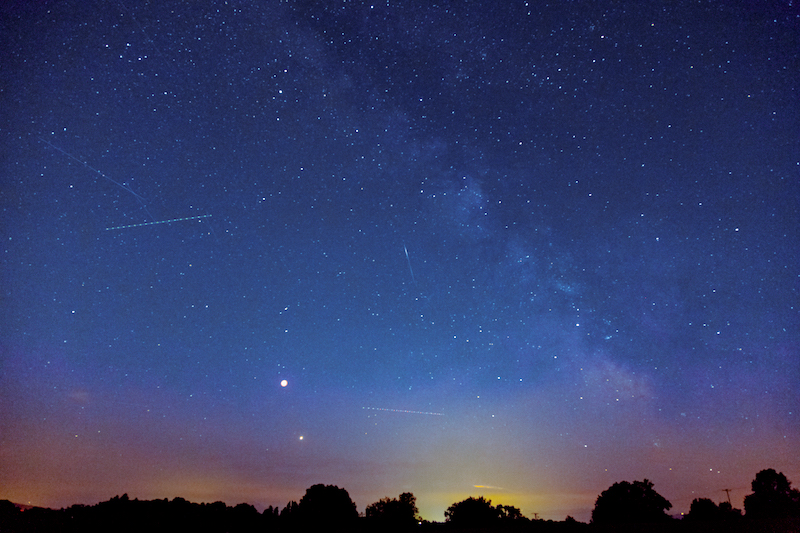
Photography can capture the atmosphere only in parts. It is also a bit challenging due to constantly changing conditions of light. Using longer exposure times lead of course to visible movement of the moon in the picture and the object is not any longer sharp.
But even with an equipment which is normally not supposed to do astrophotography, it is possible to get some impressive shots when using a tripod and a timer. The best idea is to take a lot of pictures with different exposure times.
I used ISO 400 when the eclipse began, then 640, 1000 and some shots with ISO 3200. Noise then can become a problem, therefore I did some noise-reduction with photoshop.
